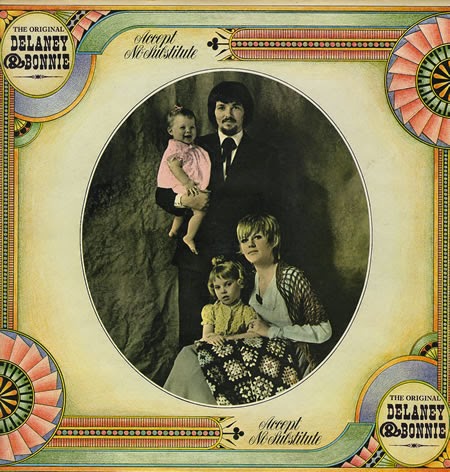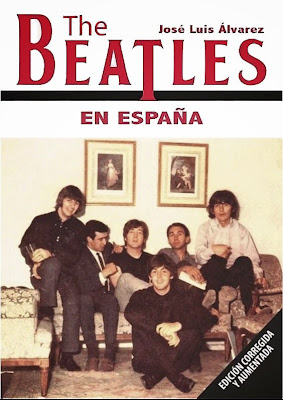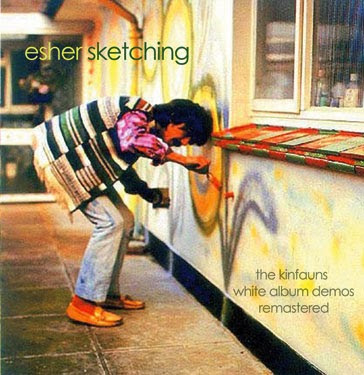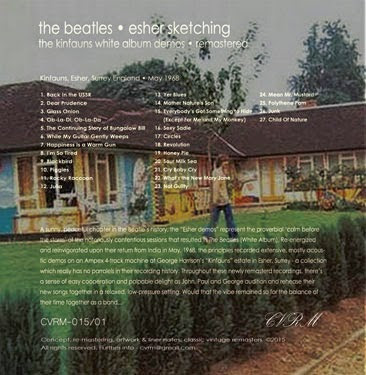![]() |
| TMOQ Gazette from HMC: The Long And Winding Road |
The new releases from HMC was in the mailbox this morning, and I have had a first look at the one that interested me the most.
As a video collector ever since I got my first video cassette recorder back in 1981,
Neil Aspinall's
"The Long and Winding Road" has been a documentary film we only ever heard about and never got to see. The film eventually evolved into the
"Beatles Anthology" TV-series, video cassettes and DVD collection, a far better product than it's starting point. Still, finally getting to watch it was a hoot, but it must be said that the clips used in the documentary were of a quality very much similar to
"The Compleat Beatles" documentary from 1982, or worse – we are now accustomed to much better qualities of the same film clips in projects like
"The Beatles' First U.S. Visit" and the afore mentioned "Beatles Anthology". Not to mention the sound, Neil's film seems to have the unprocessed sound from the clips the film was assembled from.
Like "Beatles Anthology", Neil's film relies on interviews with the Beatles instead of narration, but for the Anthology Paul, George and Ringo were allowed to comment in hindsight and included interviews with Neil himself and producer
George Martin as well as archive interviews with John Lennon. Here's a rundown of the "Long and Winding Road" film, as presented on this new underground release from HMC.
The opening is from the
"Yellow Submarine" cartoon.
"Some Other Guy" from the Cavern Club is up next, with
Brian Epstein talking over it. The Beatles in Liverpool from
"The Mersey Sound", doing
"Love Me Do" is next up – with interviews of George, John, Paul and Ringo from that same film.
"From Me To You" is played, illustrated with clips of the Beatles departing and arriving at airports and fans in the streets.
"The Beatles Come To Town" offers
"She Loves You" and
"Twist and Shout" with a lot of audience noise. Arriving in New York at JFK airport, we get a little bit from the press conference, and get in the limousine with the Beatles listening to their portable Pepsi radio. Some footage from the Maysles brothers' documentary
"What's Happening: The Beatles in the USA" is shown, and we get an incomplete
"I Want To Hold Your Hand" from the
Ed Sullivan Show, before we board the train to
Washington D.C. The Washington press conference is intercut with footage from the concert at the
Coliseum (just setting up, no performance), and we leave America to arrive back in London. The airport interview follows, before we go to next year's
Blackpool concert for George's introduction of
"Yesterday", which we get in full. Back to 1964 and a clip from
"Around The Beatles" show the Beatles in Shakespearian costumes in parts of the "Midsummer Night's Dream" sketch. We now get a three way split screen with the concert portion of "Around The Beatles" in the lower screen, whereas the two upper screens show the Beatles on tour in various countries,
Jimmy Nicol deputising for Ringo. A bit of the
"A Hard Day's Night" film is up next, before we get quite a bit of
"The Beatles at Shea Stadium" with
"I Feel Fine",
"Dizzy Miss Lizzie" and
"Act naturally". The two latter ones had transparent footage of the Beatles performing overlayed on audience shots. The segment ends with
"I'm Down" from the opening of the film. A marching band performs the theme song of
"Monty Python's Flying Circus"for a segment about the Beatles getting their MBE's with them posing and clips from the press conference after having left the palace.
"Help!" film clips are up next. The screen is now split in two, with the film performances of the songs
"Another Girl",
"I Need You"and
"You're Going To Lose That Girl" on the left and action scenes from the film on the right.
The word CHRIST comes on the screen, followed with the familiar
Ku Klux Klan spokesman interview on half the screen and statements from John, Paul and Brian on the other half. The "Beatles are bigger than Jesus" segment ends with John's excuse from the press conference. The "lesbians and prostitutes" press conference is next up, with perhaps a bit more footage than usual, but we don't get Paul's funny reply. Scenes from
"How I Won The War"goes into the
"Strawberry Fields Forever"promo film in quite crappy quality. The promo film for
"A Day In The Life" is next up, it too in mediocre quality, both sound- and picturewise. The final chord is missing, and a Paul interview about coming clean about his involvement with drugs is inserted. Split screen time again, with the
"Our World" broadcast on the right and the Beatles going about with their rendezvous with the
Maharishi in
Bangor on the left. The final
"A Day In The Life" chord punctuates the song, and the Bangor interview with John and George about Brian Epstein's death fills the screen.
"Hello Goodbye" is played, starting with footage of the "Flying» clouds" going into the Savile Theatre promo film in Pepper suits, which cuts over to the "outtakes" version (no. 3), returning to the Pepper version for the end and the Maori finale. This is followed by clips from
"Magical Mystery Tour"TV-film,
"Blue Jay Way", the four or five magicians, drunken bus singalong going into
"I Am The Walrus", aunt Jessie and Ringo quarreling, John's interaction with little Nicola and the
"Your Mother Should Know" sequence ends the brief excursion into this film. The title song lingers through the opening of the
Apple boutique with colour footage from that event and the familiar news film voiceover. The computer printout of Beatles titles reveals that we are about to see some clips of the staged rehearsal of
"Hey Jude" from the
"Music! Experiment in Television" film, with the two Georges in the control room, supervising. This goes over into one of the Twickenham promo clips for the song before it returns to the "Experiment in Television" version again. John and Paul talks about the formation of
Apple Corps in an American interview, before we get
"Revolution"from Twickenham, with inserts from the Apple promo film with the
Dick James board discussion taking place. The Apple boutique closes and finishes with a funny shot of a businessman escaping with a free dress. John and Yoko are arrested, followed by
"You Win Again" from the
"Let It Be" outtakes. There is some unpublished footage here from that film, including a jam with Yoko Ono, footage from the control room,
"I've Got A Feeling" from Apple studio going into the rooftop version, and we also get
"Get Back" from the rooftop, evolving into scenes from Paul and Linda's wedding and John and Yoko's bed peace. Ringo rows a boat while being interviewed about going into films. John is interviewed about the future of the Beatles and has an arguement with
Gloria Emerson, before we get the
"Something" promo clip.
"The End" from Abbey Road ends the film sonicwise, accompanied with the end of the "Magical Mystery Tour" TV-film, I'm sure the video here was just a placeholder for whatever collage Neil was planning to assemble for the real ending. Curiously, the song from which the documentary got it's title is never played.
I'm really glad they later employed film researchers who managed to find the original films, or at least better copies than used here, as Neil's assembled documentary is no feast neither for the eye nor the ears. Still, it was great to finally be able to watch the film we heard so much about. It does indeed look a lot like both the previously mentioned "Compleat Beatles" documentary, as well as the Beatles segments from Tony Palmer's
"All You Need Is Love" TV-series from 1976. What it lacks is coherence, essentially it's just a string of clips from various TV-shows and other films - there's a story to be told, but then again perhaps the story was already well known.
The bonus material is of a much better quality and really interesting! If you're not into the Long and Winding Road film, these clips are well worth the whole price of the package.
We get colour outtakes from:
- Rain (Chiswick Park)
- Strawberry Fields Forever
- A Day In The Life
All featuring outtakes or early versions of the songs as audio accompanyment.
The DVD finishes off with a complete, unedited Paperback Writer video no 4 in great quality (black and white)
I have yet to play the CD from the package. The Gazette has a brief history of the film, a chapter on Neil Aspinall, a rundown of the film itself, as well as notes on the contents of the audio disc.









































